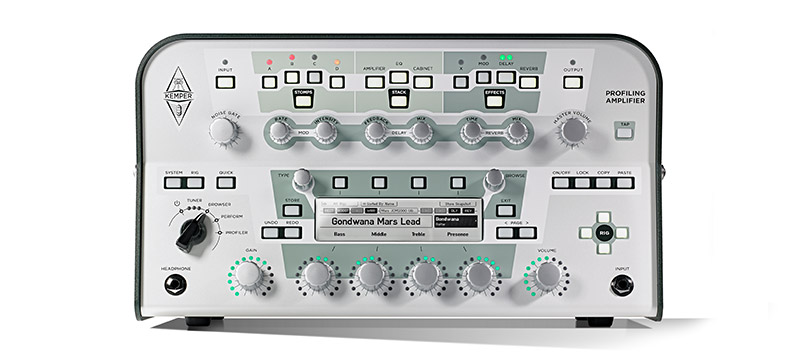Modeling vs. profiling
When entering the digital realm there are two paths to follow. There’s the amp modeling route, and the more recent (and pricier) addition is amplifier profiling made popular by the Kemper Profiling Amp.

A multieffects pedal typically ‘models’ the circuits of an amplifier, in attempt to accurately recreate the sound in digital form. This is not to be confused with ‘profiling’, which is the process of analyzing the characteristics of an amplifier and replicating the input signal all the way to the output stage.
With that being said, an ‘amp profile’ can only be created from an existing sound. If you like the sound of a particular amp modeler, you can create a digital profile of it. Or you can take a digital snapshot of your amplifier at a particular moment in time.
It could be said that the profiler is more true to a real-life scenario. For example, you could own two of the same amps, and both may sound slightly different. This could be due to various factors, from the amount of time the amp has been switched on, to the amount of wear on the tubes. A profile can accurately reproduce the sound and nuances of an amp from a particular moment in time.
Kemper – the best there is?
The Kemper amp certainly seems to be the favorite amongst prominent recording artists. A close runner up includes the Axe-Fx.
One advantage is the ability to ‘exchange amplifiers’. You can simply make a profile of your configuration, and send it to a friend on the other side of the world.
There are some great players on YouTube that have profiled their configuration. Check out Rick Beato, Tim Pierce and Guido Bungenstock.
Keep in mind that a profile can exist of individual components, such a stompbox, head or cabinet. It’s common, however, to profile a complete rig. The sound of the profile includes the microphones that were used and their placement, room ambience and even the qualities of the mic preamp.
Live or studio?
The Kemper is a great solution, and gives you the ability to transport a trucks worth of equipment in a highly portable way. It’s why we have seen many pros adapt the Kemper for both stage and studio.
We must, however, factor in monitoring for both stage and studio use. The Kemper may very well send a fantastic signal to the front of house engineer, but stage monitoring will in many cases ‘feel different.’ It’s why the Kemper, at this point in time, is most commonly found in the studio.
But there is even more at play here. While a recording studio is more than likely going to provide us with an accurate pair of FRFR monitors, we must also consider the preamp and conversion that’s being used. But this is a whole other topic, and will be addressed in an upcoming post.
